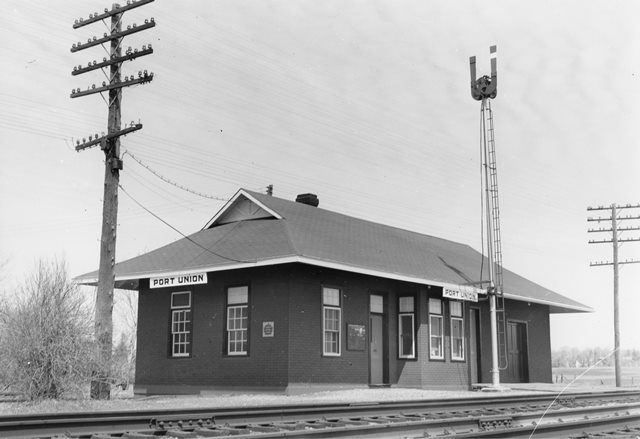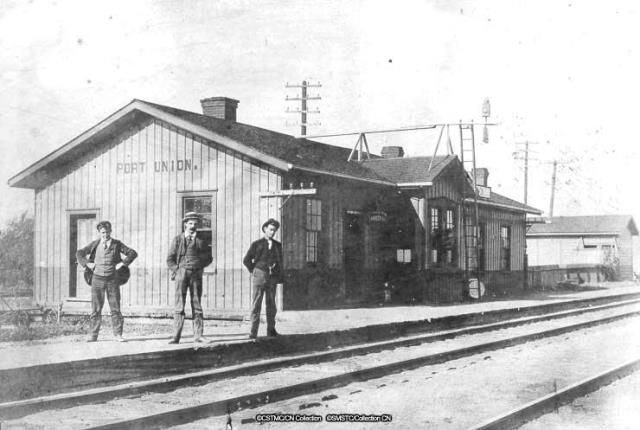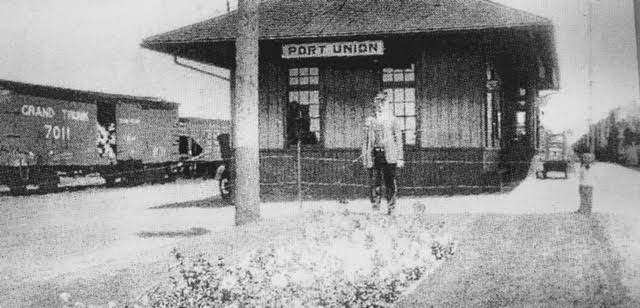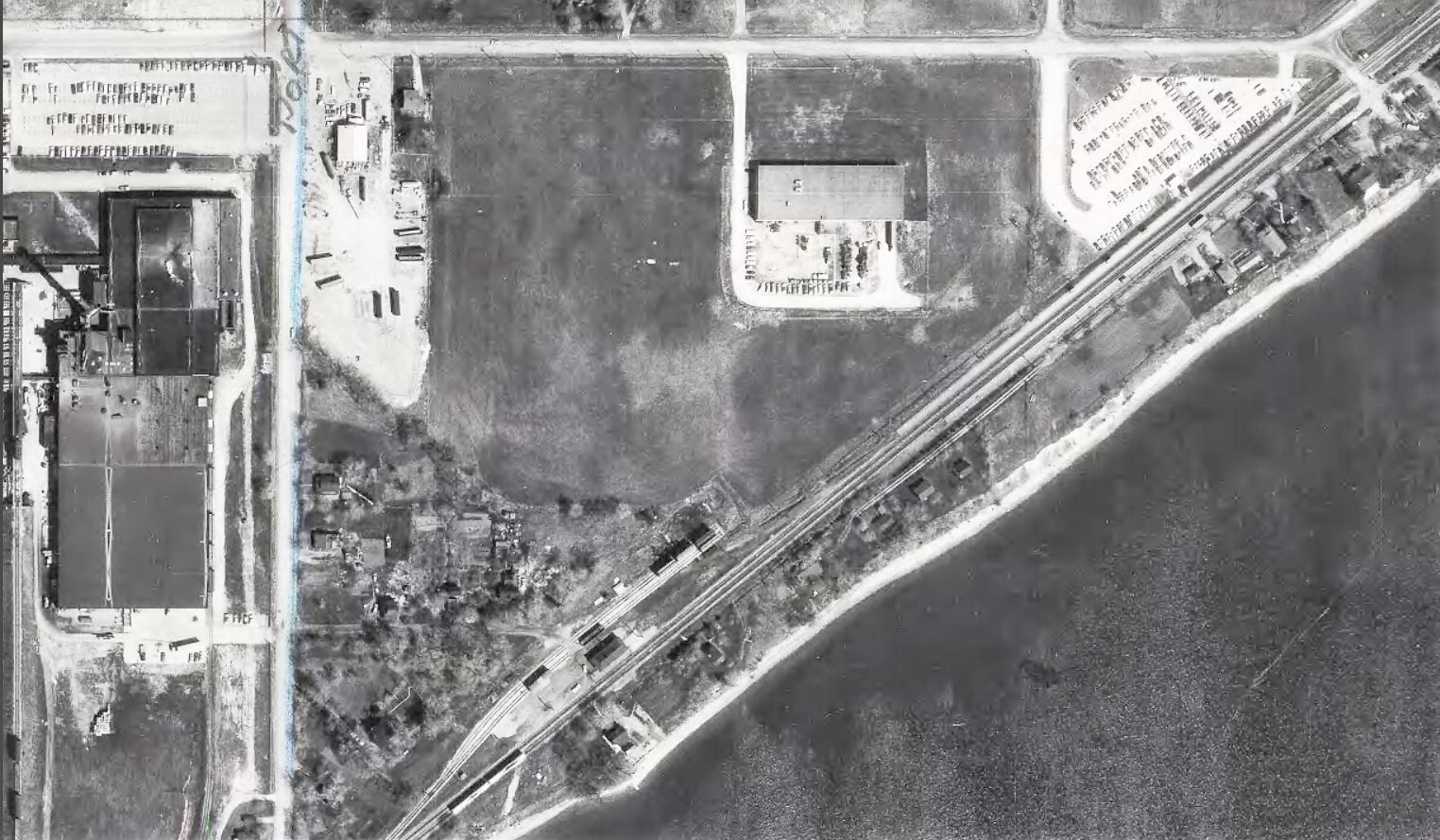Summary
The first train station in Port Union was built by the Grand Trunk Railway while construction of the railway was progressing west towards Toronto. While no photos are known to exist of this station, it most likely followed the same design applied uniformly across the entire line between Toronto and Montreal with surviving examples in Port Hope and Napanee. The line was opened in sections with the first train arriving at Port Union on August 25th, 1856, but service all the way through to Montreal did not become available until October 27th of the same year. A post office for the community of Port Union opened in the station in 1865, and it saw a total of six passenger trains on a daily basis by 1867.
The line between Montreal and Toronto was originally single track with sidings every so often for trains to pass each other, but in the 1880’s work began on double tracking the entire length to allow for a higher volume of trains. The first section was double tracked between Toronto and Scarborough Junction in 1889, followed by the section from Scarborough Junction to Port Union in 1892. The second track would have been laid past the station and up to the bridge over the mouth of the Rouge River to the east. This work involved replacing the original station with a new one in its place, perhaps as a result of regrading the line through the area. The new station was a single storey board-and-batten structure that was only slightly larger than its predecessor. Besides a simple pitched roof and an operator’s bay to provide visibility from the station agent’s office, it would’ve contained a waiting room and baggage room on opposite sides of the building.
The second station existed for only a short time as it was replaced once more just 13 years later in 1905. The new station was noticeably smaller, but followed a somewhat more contemporary design. Its exterior walls were still board-and-batten but with a more attractive dutch roof and diagonal walls on the sides of the operator’s bay. With the double track now complete between Toronto and Montreal, the station now saw a total of eight passenger train departures per day. The Grand Trunk encountered financial difficulties during the early 20th century, culminating in its nationalization and subsequent absorption into Canadian National in 1923. The popularization of automobiles over the next several decades would contribute to a significant decline in passenger ridership, which was further intensified by the construction of Highway 401 through Port Union in 1947. The highway was built just 2.2 kilometers north of the station, and would ultimately run parallel to the railway for most of its length and serve many of the same communities. Service would drop from 12 trains per day in 1940 to just three trains per day in 1961, all of which would now only stop on request to minimize unnecessary stops. In 1967, the Government of Ontario established GO Transit to operate between Pickering and Oakville to maintain commuter service while it was gradually phased out by Canadian National. As more space for parking was deemed necessary than the original station could provide, a location was selected approximately half a kilometer to the east for a new station to be built for GO Transit. Passenger service to Port Union Station subsequently ended, but the building remained in use by Canadian National as a train order office until the implementation of Centralized Traffic Control. It was torn down several years later in 1972 and the property is now occupied by Port Union Village Common Park.
Condensed Station Info:
| Location: | Served By: | Current State: | Date Built: | Date Demolished: |
| Port Union Road and Bridgend Street | Grand Trunk (1856 – 1923) Canadian National (1923 – 1967) | Demolished | 1856 (First) 1892 (Second) 1905 (Third) | 1892 (First) 1905 (Second) 1972 (Third) |





